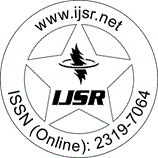Downloads: 1
United States | Information Technology | Volume 14 Issue 2, February 2025 | Pages: 1894 - 1898
Micro Frontends in Angular for Scalable Enterprise Applications
Abstract: Micro frontends have emerged as a strategic architectural paradigm for decomposing large scale web applications into independently deployable UI modules, aligning closely with domain driven design and modern DevOps practices. This paper examines the feasibility and efficacy of implementing micro frontends using the Angular framework within enterprise environments that demand long term scalability, strict governance, and distributed team autonomy. I explore architectural approaches such as Webpack Module Federation, monorepo versus polyrepo code organization, and the integration of shared design systems and state management solutions like NgRx and RxJS. Through a comparative analysis with traditional monolithic Angular applications, I evaluate the trade-offs in terms of performance, maintainability, deployment complexity, and cross-team coordination. A real-world implementation case study illustrates practical outcomes, including reductions in release friction and improved parallel development velocity, alongside challenges related to dependency versioning and UX consistency. My findings demonstrate that Angular, when combined with carefully governed micro frontend strategies, can effectively support scalable enterprise application ecosystems. I conclude with design recommendations and future research opportunities in standardizing orchestration patterns and leveraging automation or AI for composition and lifecycle management.
Keywords: Micro Frontends, Angular, Enterprise Architecture, Web Application Scalability, DevOps, NgRx, Frontend Modularization, UX Consistency
How to Cite?: Rajesh Nadipalli, "Micro Frontends in Angular for Scalable Enterprise Applications", Volume 14 Issue 2, February 2025, International Journal of Science and Research (IJSR), Pages: 1894-1898, https://www.ijsr.net/getabstract.php?paperid=SR25214095608, DOI: https://dx.doi.org/10.21275/SR25214095608
